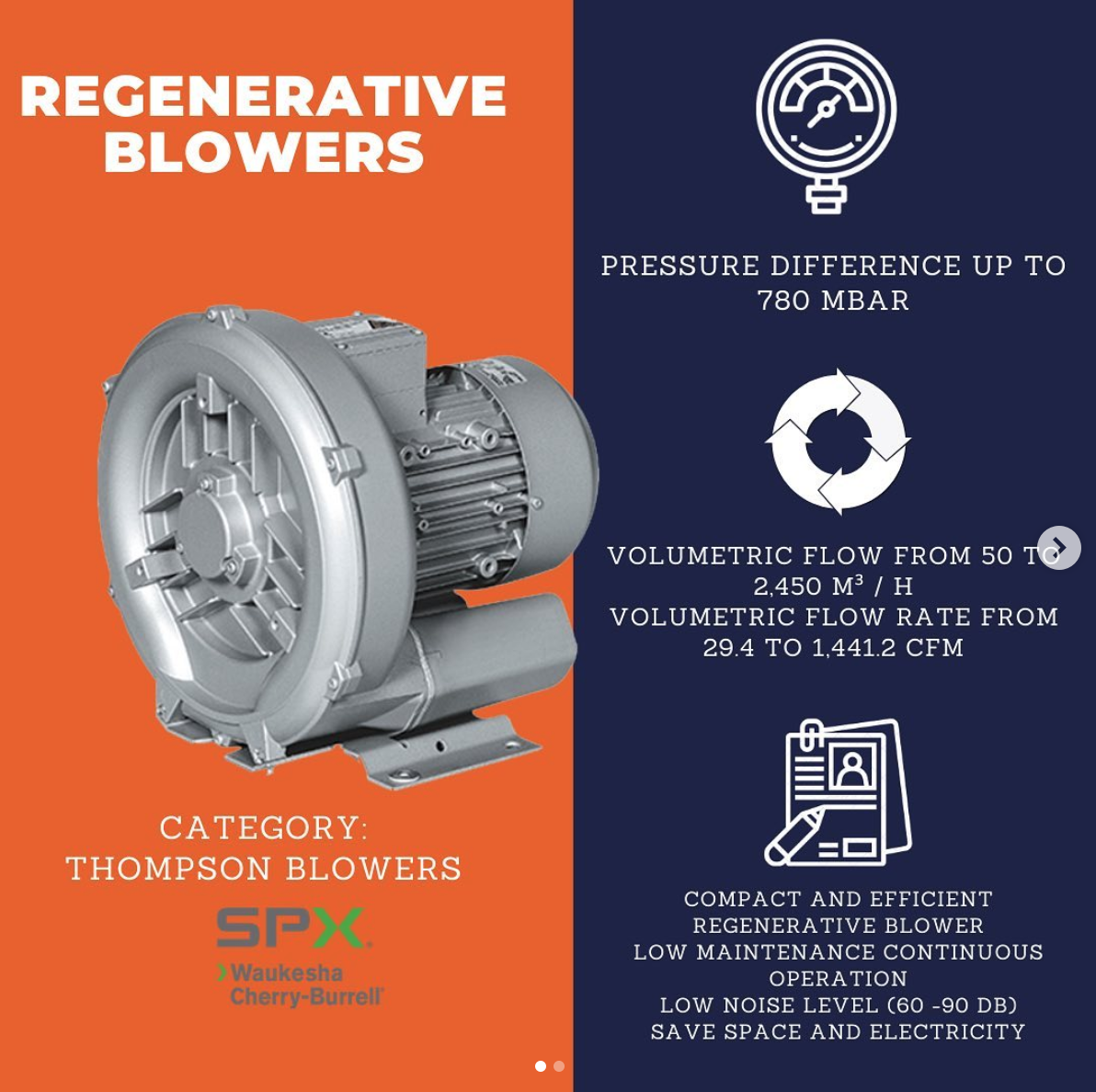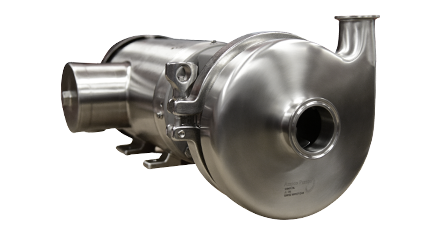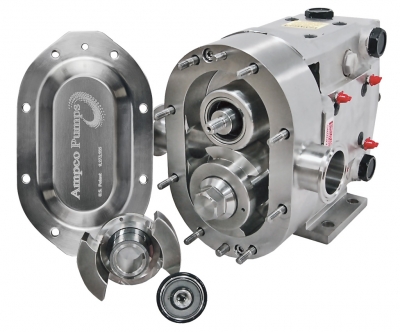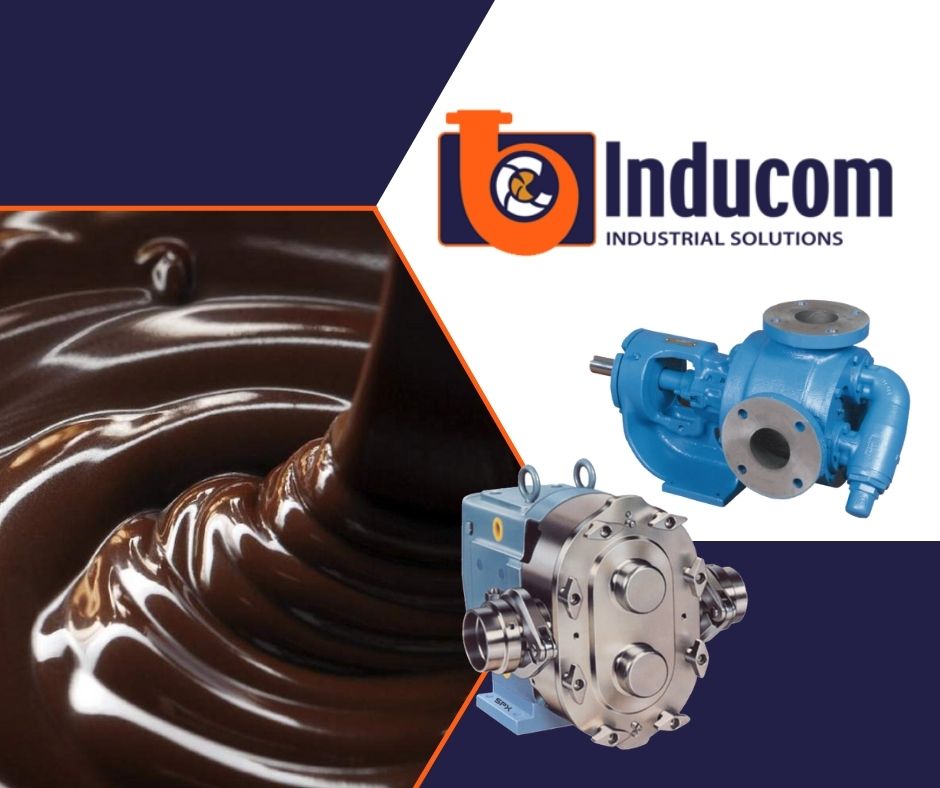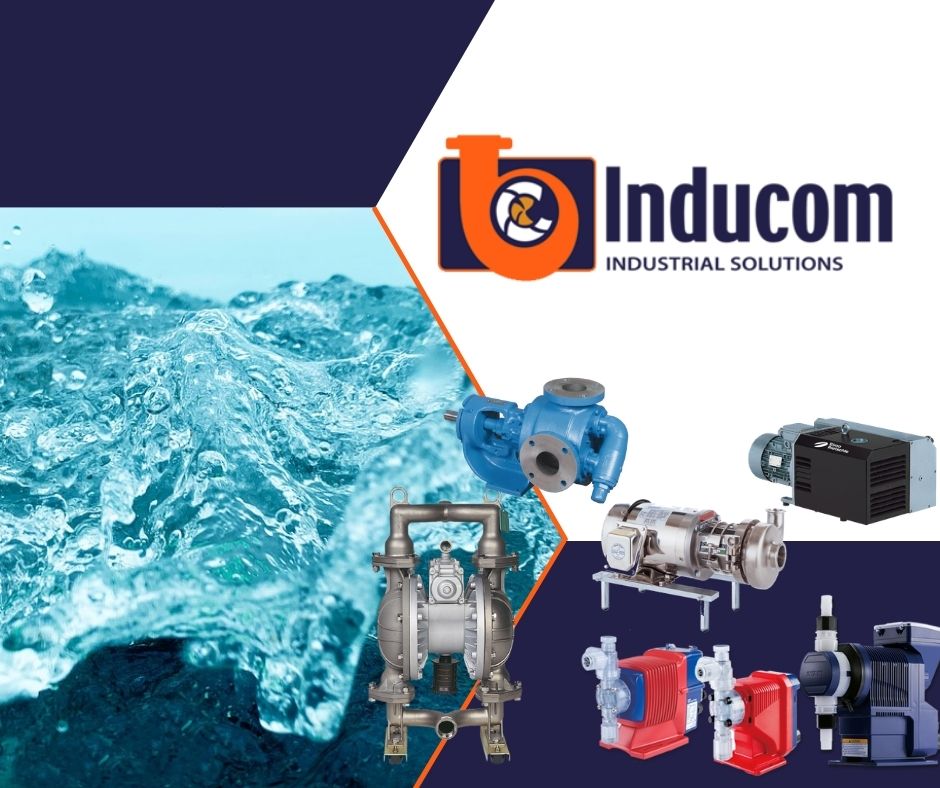Selecting the most suitable vacuum technology for chemical and pharmaceutical process applications is often a difficult task. First of all, a vacuum system must be able to offer the required flow at the operating pressure and thus guarantee the required emptying time. Second, it cannot be sensitive to process gases and must meet all requirements in terms of CIP (clean-in-place) cleaning and gas recovery. Reliability and cost-effectiveness also play an important role when choosing a vacuum technology.
In this document, we highlight the three most used vacuum technologies in chemical and pharmaceutical technological processes.
- Liquid Ring Vacuum Pumps
- Dry Screw Vacuum Pumps
- Oil-lubricated rotary vane vacuum pumps
Liquid Ring Vacuum Pumps
Liquid ring vacuum pumps (fig. 1) are used in many applications. These are rotary positive displacement pumps with an impeller placed eccentrically in a cylindrical chamber (fig. 2). Water is usually used as the operating liquid. The rotation of the impeller creates a liquid ring inside the chamber that seals the spaces between each of its blades. The gas is conveyed through the spaces created between the center, the blades, and the liquid ring. Thanks to the eccentric position of the impeller, the volume of these spaces increases, and thus the gas is sucked through the suction inlet. As the impeller continues to rotate, the volume of these spaces is reduced, whereby the gas is compressed and discharged back through the exhaust duct.
After many years of use, these pumps have proven to be robust and reliable vacuum generators in chemical processes. The operating liquid continuously dissipates the heat of compression in the compression chamber, so that the pump operates almost isothermally. This means that the process gas does not get too hot and the pump operates at relatively low temperatures. This considerably reduces the risk of unwanted reactions or explosions. Low operating temperatures also facilitate condensation of vapors and gases, which increases the nominal flow rate of the vacuum pump.
Water is usually used to generate the liquid ring. Ethylene glycol, mineral oils, or organic solvents are also used in practice. The final pressure reached by the vacuum pump depends on the vapor pressure and the viscosity of the liquid. The viscosity of the operating liquid will affect the energy consumption of the vacuum pump.
Liquid ring vacuum pumps are available in different versions, with different materials and seals.
Advantages of liquid ring vacuum pumps:
- The entry of vapors or liquids into the system practically does not affect them
- Their different material versions allow them to adapt to the process of gas
Disadvantages:
- Potential for contamination of the operating fluid with process gas condensate, necessitating post-treatment of the operating fluid before disposal
- High energy consumption
- The final pressure reached depends on the vapor pressure of the operating liquid
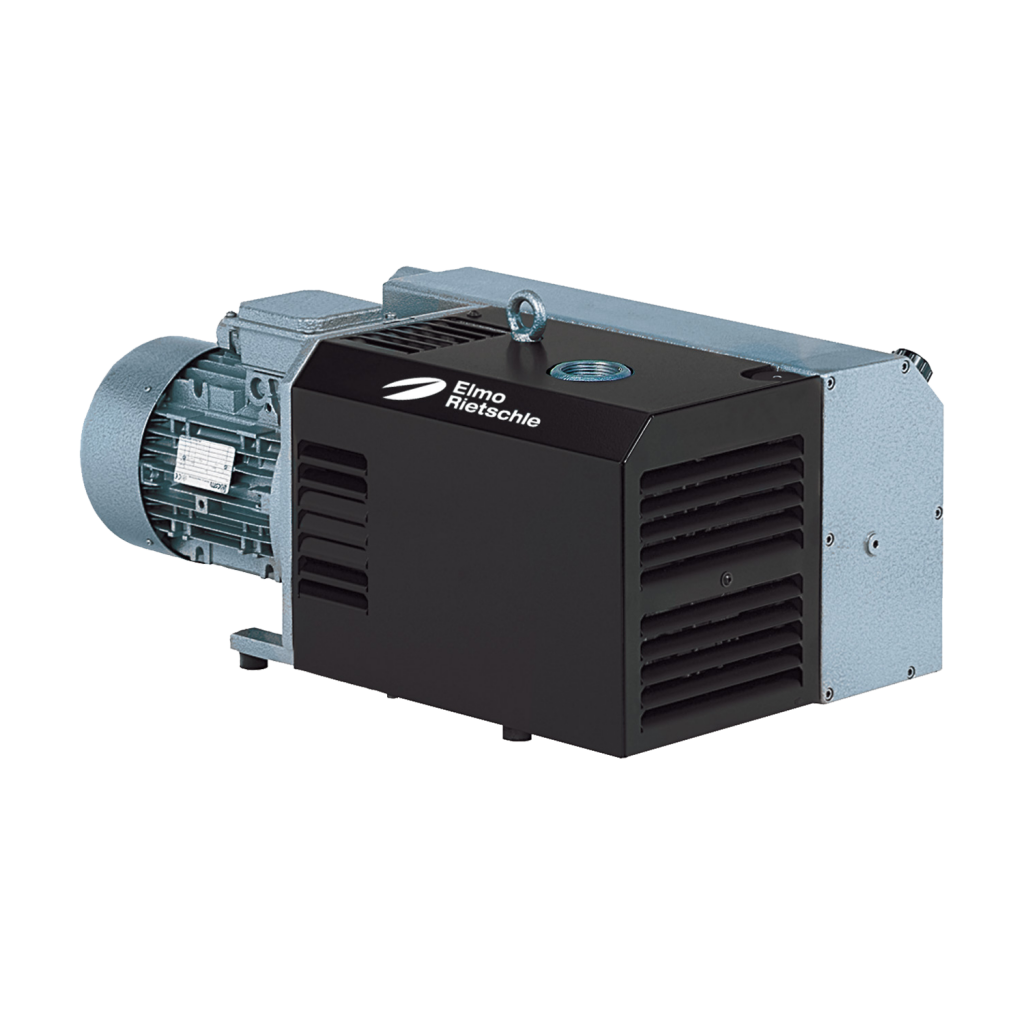
Dry Screw Vacuum Pumps
Dry screw vacuum technology is also widely used in the chemical and pharmaceutical industries. However, it is a relatively new technology compared to the liquid ring.
In the 1990s, Busch introduced the first dry screw vacuum pump on the market, the COBRA AC. The main difference from the liquid ring vacuum pump described above is the fact that screw vacuum pumps (fig. 3) do not need an operating liquid to compress the process gas. For this reason, they are called “dry” screw vacuum pumps.
In a screw vacuum pump, two screw-shaped rotors rotate in opposite directions (fig. 4). The pumped solution is trapped between the cylinder and the screws, is compressed, and transported to the gas outlet. During the compression process, the rotors do not come into contact with each other or with the cylinder. The precision in its manufacture and the minimum space between the moving parts are the two factors that make this operating principle possible, and thus a limit vacuum <0.1 mbar is guaranteed.
Screw vacuum pumps use water cooling, which ensures a homogeneous temperature distribution throughout the pump body and, therefore, thermal stability throughout the entire process.
Modern screw vacuum pumps have a variable thread pitch that allows a homogeneous compression of the process gas throughout the entire screw. This offers the advantage that it guarantees the same temperature throughout the compression chamber so that it can be easily controlled. In older generations of screw vacuum pumps, the thread pitch is the same over its entire length. This causes compression of the process gas in the last half rotation of the screw, generating an excessive thermal load at that point. This makes it more difficult to set the ideal operating temperature with water cooling. Generally, screw vacuum pumps operate at higher temperatures than liquid ring vacuum pumps. This largely eliminates the condensation of the process gas elements. This allows the process gas to be transported through the vacuum pump without contaminating the operating liquid or causing a reaction with it. Cast iron is the standard material used in all parts that come into contact with the aspirated solution. It is an untreated material or treated with a special coating to make it resistant to almost all chemicals. At the end of the process, we recommend flushing the vacuum pump with a suitable cleaning fluid and purging it with nitrogen to prevent corrosion and sediment formation during periods of inactivity. This allows the process gas to be transported through the vacuum pump without contaminating the operating liquid or causing a reaction with it. Cast iron is the standard material used in all parts that come into contact with the aspirated solution. It is an untreated material or treated with a special coating to make it resistant to almost all chemicals. At the end of the process, we recommend flushing the vacuum pump with a suitable cleaning fluid and purging it with nitrogen to prevent corrosion and sediment formation during periods of inactivity. This allows the process gas to be transported through the vacuum pump without contaminating the operating liquid or causing a reaction with it. Cast iron is the standard material used in all parts that come into contact with the aspirated solution. It is an untreated material or treated with a special coating to make it resistant to almost all chemicals. At the end of the process, we recommend flushing the vacuum pump with a suitable cleaning fluid and purging it with nitrogen to prevent corrosion and sediment formation during periods of inactivity. It is an untreated material or treated with a special coating to make it resistant to almost all chemicals. At the end of the process, we recommend flushing the vacuum pump with a suitable cleaning fluid and purging it with nitrogen to prevent corrosion and sediment formation during periods of inactivity. It is an untreated material or treated with a special coating to make it resistant to almost all chemicals. At the end of the process, we recommend flushing the vacuum pump with a suitable cleaning fluid and purging it with nitrogen to prevent corrosion and sediment formation during periods of inactivity. Thanks to their different sealing systems and their variety of coatings, Busch screw vacuum pumps can be configured to be compatible with any chemical product.
Advantages of dry screw vacuum pumps:
- Dry compression, no possibility of contamination or reaction between process gas and operating liquid
- High vacuum level
- Energy efficiency
- Can be designed for almost all process gases thanks to material selection and temperature regulation
Disadvantages of dry screw vacuum pumps:
- They are sensitive to particles entering the system
- They cannot be used with process gases that tend to be reactive at high temperatures.
Single Pass Oil Lubricated Rotary Vane Vacuum Pumps
Oil-lubricated rotary vane vacuum pumps have been used successfully in many applications for decades. They are currently one of the most widely used types of mechanical vacuum pumps in the industrial sector. Busch developed the Huckepack pump as early as the 1960s, a single-stage, two-stage oil-lubricated rotary vane vacuum pump specially designed for chemical and pharmaceutical processing technology. Busch has continued to develop this vacuum pump, which continues to enjoy wide acceptance in process technology due to its robustness.
Huckepack rotary vane vacuum pumps (fig. 5) have three important distinguishing features compared to other vacuum pumps that operate on the rotary vane principle:
- The two compression stages are stacked and interconnected, facilitating initial compression of the process gas in the first stage and secondary compression in the next stage. This allows a lower final pressure to be achieved.
- These vacuum pumps are oil lubricated, which means that a defined quantity of operating liquid, oil, or other liquid compatible with the solution is injected into the compression chamber. Other rotary vane vacuum pumps, meanwhile, use recirculated oil lubrication.
- Huckepack rotary vane vacuum pumps are water-cooled so that the operating temperature can be regulated within a certain range.
Huckepack rotary vane vacuum pumps are positive displacement rotary pumps. The vanes are placed in grooves in a rotor that rotates eccentrically in a cylindrical chamber. Due to the centrifugal force created by the rotating movement of the rotor, the vanes slide out of the grooves and come into contact with the cylinder wall. This creates spaces with different volumes that, in turn, generate the effect of aspiration and compression. To reduce friction and improve sealing, oil is continuously injected into the compression chamber. This process takes place in both compression stages before the process gas is discharged along with the operating liquid through the outlet and can be removed. Both stages are water-cooled.
As the lubricant only circulates through the vacuum pump once, almost all liquids with a viscosity in the range of 150 centistokes (CST) can be used. These fluids constantly clean the running vacuum pump and protect it against corrosion and sediment. Busch offers paddles in three different materials to ensure resistance to most solvents.
Advantages of Single Pass Oil Lubricated Rotary Vane Vacuum Pumps:
- High vacuum level
- They are extremely robust and reliable
- Ease of maintenance
- They are perfect for transporting acid and monomer vapors or products that cause polymerization
Disadvantages:
- Operating fluids must be treated or disposed of properly.
GET YOUR VACUUM PUMP HERE: https://inducom.us/product/vacuum-pump/
Resume
All of the vacuum generation technologies discussed in this document have advantages and disadvantages. There is no one ideal solution for all applications. For this reason, it is important to consult with a vacuum expert and consider all important process parameters: from process conditions, process gases, and integration with process control, to cost-effectiveness, safety, and reliability. reliability of future vacuum generation. In most cases, taking these factors into account allows you to obtain a vacuum system that is tailored directly to your needs.
Read about the Vacuum Pump that we have on stock:: https://inducom.us/product/vacuum-pump/

